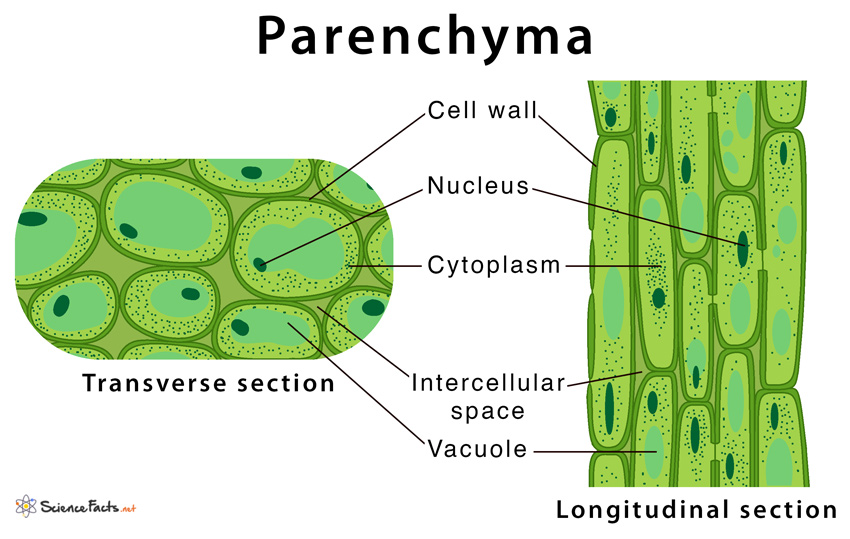The term ‘parenchyma’ has originated from the Greek word ‘Para’ which means beside and ‘Enchyma’ meaning inclusion. It was introduced in the 17th century when Robert Hooke discovered the plant cells.
Food Production: Chlorenchyma, present in green parts of the plant contains the green pigment, chlorophyll that helps in food production by photosynthesis Storage: Storage parenchyma contains large intercellular space which helps in the storage of starch, water, fats, and oil droplets Transport: Vascular and conjunctive parenchyma helps in the transport of water, nutrients, and other substances throughout the plant Gas exchange: Aerenchyma absorbs carbon dioxide and releases oxygen during the process of photosynthesis and respiration Reproduction: Meristemetic parenchyma divides and give rise to all other cell types and is thus called ‘totipotent’ cellsRegeneration: Meristematic parenchyma retain their ability to divide even on maturity and thus help in regeneration and healing a plant’s wound Strength and Protection: Epidermal parenchyma, present in plant organs helps them to provide mechanical strength and protection from any physical damage
Other functions:
Aerenchyma helps in floating of aquatic plants Epidermal parenchyma reduces evaporation of water droplets from the aerial parts of a plant and prevents them from drying out
